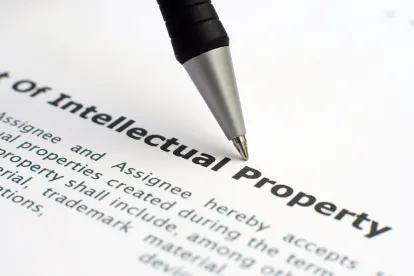On June 15, 2017, the Federal Circuit rejected a patent owner’s attempt to establish with uncorroborated and conclusory inventor testimony that an alleged prior art reference was not “by another” under pre-AIA 35 U.S.C. § 102(e).
In EmeraChem Holdings, LLC v. Volkswagon Group of Am., Inc., No. 2016-1984, slip op. (Fed. Cir. June 15, 2017) (precedential), the Federal Circuit largely affirmed an obviousness determination by the Patent Trial and Appeal Board in an inter partes review proceeding based on a prior art patent listing some, but not all, of the inventors listed on the challenged patent. Section 102(e) provides: “A person shall be entitled to a patent unless . . . the invention was described in patent granted on an application for patent by another filed in the United States before the invention thereof by the applicant for patent . . . .” 35 U.S.C. § 102(e) (2010) (emphasis added). “The statute’s reference to ‘by another’ means that an application issued to the same inventive entity cannot qualify as § 102(e) prior art.” EmeraChem, slip op. at 5. “However, the relevant question is not whether references list different inventors, but whether the portions of the reference relied on as prior art, and the subject matter of the claims in question, represent the work of a common inventive entity.” Id. at 5-6. (quotations omitted).
On appeal, the patent owner argued that the inventors of the challenged patent solely conceived of and invented the subject matter in the alleged prior art reference that was cited against the patent, relying on an inventor declaration to that effect. Id. at 6. The inventor’s testimony, the patent owner argued, established a common inventive entity and required reversal of the Board’s determination that the reference was prior art. Id.
The Federal Circuit disagreed, finding that the inventor declaration “by itself fail[ed] to demonstrate that the portions of [the reference] relied upon as prior art and the subject matter at issue in the [challenged patent] share a common entity.” Id. According to the Federal Circuit, the declaration amounted to “a naked assertion by an inventor that he and a co-inventor are the true inventors of the passages cited.” Id. “Nothing in the declaration itself, or in addition to the declaration,” the Federal Circuit said, “provides any context, explanation, or evidence to lend credence to the inventor’s bare assertion.” Id.
Nevertheless, the Federal Circuit refused to “hold that corroboration of an inventor’s declaration is required in every case.” Id. It also commented that “it cannot be the case that the high degree of corroboration emphasized” in cases like Woodland Trust v. Flowertree Nursery, Inc., 148 F.3d 1368 (Fed. Cir. 1998) and Sandt Technology, Ltd. v. Resco Metal & Plastics Corp., 264 F.3d 1344 (Fed. Cir. 2001) “is required across the board,” observing that “even non-documentary, circumstantial evidence may sufficiently corroborate” in certain cases. EmeraChem, slip op. at 10. Instead, the Federal Circuit merely held “in this case” that the declaration was insufficient. Id. at 10-11.
Though the Federal Circuit in EmeraChem suggested that the corroboration requirement on inventor testimony may be flexible in certain circumstances, the outcome of the case serves as an important reminder that less is not more when relying on an inventor’s testimony regarding inventive facts.
Other Notable Decisions – Week of June 16, 2017
One-E-Way, Inc. v. Int’l Trade Comm’n, No. 2016-2105 (Fed. Cir. June 12, 2017) (precedential): In One-E-Way, the International Trade Commission found that a patentee’s asserted claims, which recited the term “virtually free from interference,” were invalid as indefinite. The Federal Circuit reversed, emphasizing that “relative terms and words of degree do not render patent claims invalid” if the “claims, viewed in light of the specification and prosecution history, inform those skilled in the art about the scope of the invention with reasonable certainty.” Having found that the specification and prosecution history of the patents-in-suit provided “a clear line such that it informs those skilled in the art about the scope of the invention with reasonable certainty,” the Federal Circuit reasoned that “[t]he term ‘virtually’ does not expand ‘free from interference’ without end: it simply requires that the claimed invention does not allow for eavesdropping.” “Thus,” the Federal Circuit concluded, “the term ‘virtually free from interference’ satisfies the requirements of § 112 ¶ 2.”
Cleveland Clinic Found. v. True Health Diagnostics LLC, No. 2016-1766 (Fed. Cir. June 16, 2017) (precedential): In Cleveland Clinic, the Federal Circuit affirmed a district court’s dismissal order based on findings of patent ineligibility and failure to state a claim for contributory and induced infringement. The Federal Circuit found no error in the district court’s analysis of “representative claims” for purposes of determining patent eligibility, reasoning that “the claims are substantially similar and linked to the same law of nature.” It also rejected the patentee’s argument that the district court should have undertaken claim construction and developed the factual and expert report before analyzing patent eligibility, noting that the Federal Circuit has “repeatedly affirmed § 101 rejections at the motion to dismiss stage, before claim construction or significant discovery has commenced.” Regarding the contributory infringement claim, the Federal Circuit found that the defendant merely provided “testing services”—not a “material or apparatus” as required by § 271(c)—and therefore could not be liable for contributory infringement. As to the induced infringement claim, the Federal Circuit found that the patentee had failed to “show specific intent and action” on behalf of the defendant to induce infringement.
Outdry Techs. Corp. v. Geox S.p.A., No. 2016-1769 (Fed. Cir. June 16, 2017) (precedential): In Outdry, the Federal Circuit affirmed an obviousness determination by the Patent Trial and Appeal Board in an inter partes review proceeding, and rejected a patent owner’s arguments that the Board failed to adequately articulate a reason to combine the prior art. The Federal Circuit acknowledged that it has “criticized the Board for failing to adequately explain it findings.” “Missing from those Board decisions,” the Federal Circuit explained, “were citations to evidence, reasoned explanations, or explicit findings necessary . . . to review for substantial evidence.” It concluded, however, that “[t]he Board’s decision here does not suffer from similar deficiencies,” finding that the Board “identified a precise and specific reason why a person of ordinary skill in the art would have been motivated to modify [the prior art], explained why one of skill would have been so motivated, and cited evidence in the references to support its reasoning.” The Federal Circuit also emphasized that “[a]ny motivation to combine references, whether articulated in the references themselves or supported by evidence of the knowledge of a skilled artisan, is sufficient to combine those references to arrive at the claimed [invention]”—it “need not be the same motivation articulated in the patent for making the claimed combination.”




 />i
/>i
